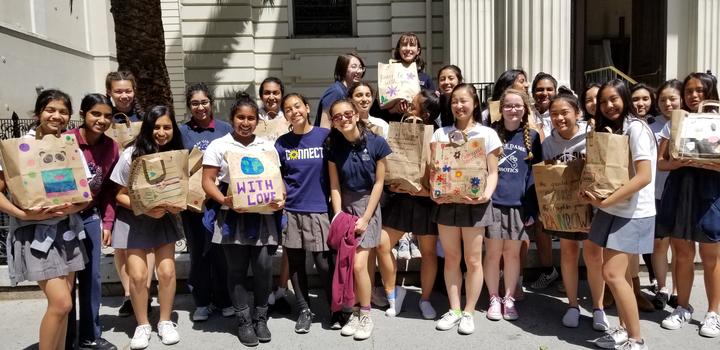
It might be difficult to see the connection between a chemistry lesson and a trip to downtown San Jose’s Cathedral Basilica of St. Joseph and their Office of Social Ministry. What do concepts of heat, energy and calories have to do with homelessness? For Notre Dame Chemistry students the connection became clear on a very personal level recently.
They began with lessons. A calorie is a unit of energy. We tend to associate calories with food, but they apply to anything containing energy. A calorie is the amount of energy, or heat, it takes to raise the temperature of 1 gram of water 1 degree Celsius (1.8 degrees Fahrenheit). Humans need energy to survive -- to breathe, move, pump blood, think -- and they get this energy from food. The number of calories in a food is a measure of how much potential energy that food has. Students looked at their own diet and the nutritional content of a variety of foods. Then they took their lessons a step further – creating Nutritional Care Packages for donation to St. Joseph’s. With these care packages in hand, students walked downtown to the cathedral, following the same path they follow when attending liturgy.
“Doing this project made what we were learning in class more applicable and tangible for me in everyday life. It provided perspective to what we were learning in terms of our community,” said one student. “I have always understood hunger as one of the worst things that can happen to any person. By learning the chemistry portion first I was able to analyze the good work we were doing not only from a moral and emotional level, but from a scientific one. This, I felt enhanced my personal experience of the project.”
St. Joseph's is an important resource for the homeless in downtown San Jose, serving between 500-700 lunches every day, distributing groceries and providing medical care. St. Joseph’s is a haven for many and Notre Dame is proud to partner with them.
